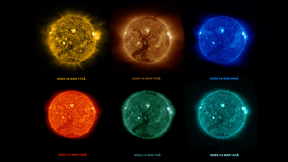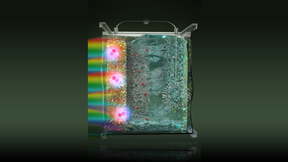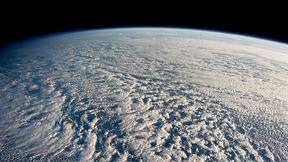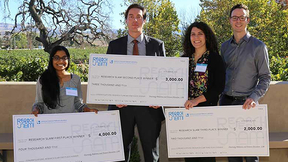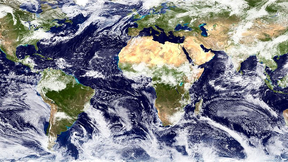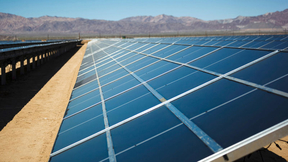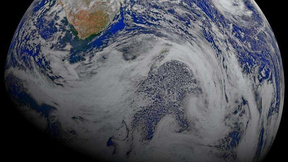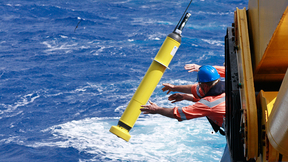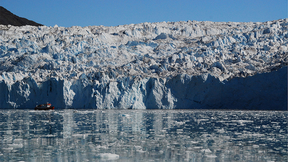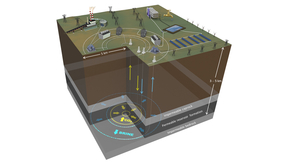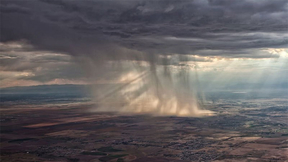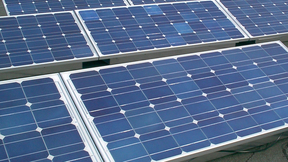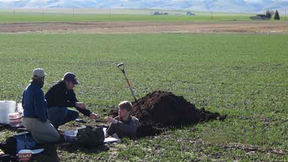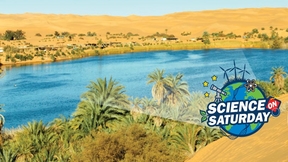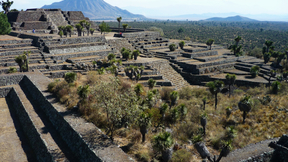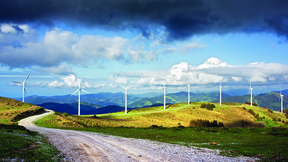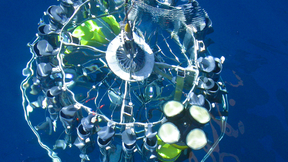Back
The first images from the Solar Ultraviolet Imager (SUVI) instrument aboard the National Oceanic and Atmospheric Administration’s GOES-16 satellite capture a large coronal hole on the sun. The Geostationary Operational Environmental Satellites (GOES) are part of NOAA’s space weather monitoring fleet. GOES-16 launched late last year. GOES-16 (known as "GOES-R" before its…
A Lawrence Livermore National Laboratory (LLNL) scientist and collaborators are fine tuning the mechanisms to generate hydrogen from water and sunlight. Hydrogen production offers a promising approach for producing scalable and sustainable carbon-free energy. The key to a successful solar-to-fuel technology is the design of efficient, long-lasting and low-cost…
Lawrence Livermore National Laboratory researchers have identified a mechanism that causes low clouds -- and their influence on Earth’s energy balance -- to respond differently to global warming, depending on their spatial pattern and location. The results imply that studies relying solely on recent observed trends underestimated how much Earth will warm due to increased…
Picture this: it's the day of your first poster presentation as a postdoc. You've picked out your best professional suit (or your only professional suit, reserved just for this occasion), your poster has been beautifully printed with help from the Lab's print plant, and your heart is racing with nerves and excitement. Your first interested visitor stops by, quizzically…
Scientists have found that changes in cloud patterns during the last three decades match those predicted by climate model simulations. These cloud changes are likely to have had a warming effect on the planet. Records of cloudiness from satellites originally designed to monitor weather are plagued by erroneous variability related to changes in satellite orbit, instrument…
Americans used less energy overall in 2015 than the previous year, according to the most recent energy flow charts released by Lawrence Livermore National Laboratory.Each year, the Laboratory releases energy flow charts that illustrate the nation's consumption and use of energy. Overall, Americans used 0.8 quadrillion BTU, or quads, less in 2015 than in 2014 (a BTU or…
Researchers at Lawrence Livermore National Laboratory and Yale University have found that climate models are aggressively making clouds "brighter" as the planet warms. This may be causing models to underestimate how much global warming will occur due to increasing carbon dioxide. The research appears in the April 8 edition of Science.As the atmosphere warms, clouds become…
Oceanographer Paul Durack of the Laboratory’s Program for Climate Modeling and Intercomparison (PCMDI) recently opined about the importance of ocean salinity observations and needed urgent attention for the ocean observing system in the journal, Nature Climate Change. The global water cycle — where, when and how it rains, and the corresponding changes to water availability…
The Earth may suffer irreversible damage that could last tens of thousands of years because of the rate humans are emitting carbon into the atmosphere.In a new study in Nature Climate Change, researchers at Oregon State University, Lawrence Livermore National Laboratory and collaborating institutions found that the longer-term impacts of climate change go well past the…
Meeting the Paris Climate Agreement goal of limiting the increase in the global average temperature to well below two degrees Celsius compared to pre-industrial levels will require increased use of renewable energy and reducing the CO2 intensity of fossil energy use.The intermittency of when the wind blows and when the sun shines is one of the biggest challenges impeding…
Lawrence Livermore researchers and collaborators have found that most climate models overestimate the increase in global precipitation due to climate change.Specifically, the team looked at 25 models and found they underestimate the increase in absorption of sunlight by water vapor as the atmosphere becomes moister, and therefore overestimate increases in global…
As part of a tri-lab consortium, Lawrence Livermore National Laboratory researchers will develop tools and understanding necessary for designing new solid-state materials for storing hydrogen gas.Storage of hydrogen onboard vehicles is one of the critical enabling technologies for hydrogen-fueled transportation systems that can reduce oil dependency and mitigate the long…
Americans' energy use continued to grow slowly in 2014, fueled by increases in the use of natural gas, wind and solar, according to the most recent energy flow charts released by Lawrence Livermore National Laboratory.Each year, the Laboratory releases charts that illustrate the nation's consumption and use of energy. Overall, Americans used 0.9 quadrillion (quads) British…
Soil organic matter, long thought to be a semi-permanent storehouse for ancient carbon, may be much more vulnerable to climate change than previously thought.Plants direct between 40 percent and 60 percent of photosynthetically fixed carbon to their roots and much of this carbon is secreted and then taken up by root-associated soil microorganisms. Elevated carbon dioxide …
Who: Lawrence Livermore scientist Andy Thompson and Tracy High School teacher Erin McKay will present "Hydrology of an ‘Ant Farm’," a presentation examining the environmental impact of drought and climate change.What: This informative and entertaining lecture will touch on groundwater interactions with surface water and surface ecosystems. The presenters will discuss some…
WHO: Lawrence Livermore scientists Jeff Mirocha and Suzanne Singer, along with Las Positas Community College instructor Eric Harpell and Granada High School teacher Tom Shefler, will present "Green Power: Making Electricity Out of Thin Air," the second of four lectures for the Science on Saturday series for students.WHAT: This informative and entertaining lecture will…
Scientists have reconstructed the past climate for the region around Cantona, a large fortified city in highland Mexico, and found the population drastically declined in the past, at least in part because of climate change.The research appears in the online edition of the Proceedings of the National Academy of Sciences for the week of Jan. 26.Lawrence Livermore researcher…
In 2014, Lawrence Livermore National Laboratory (LLNL) built on a 62-year tradition of translating basic science into technologies that ensure national security, address pressing real world problems and expand the boundaries of fundamental science.The top stories of the year are a reflection of the Laboratory’s ability to apply its core national security competencies to a…
Learn more about Lawrence Livermore National Laboratory’s modeling and simulation capabilities critical for the wind power industry during the next monthly installment of the Industrial Partnerships Office (IPO) Technology & Market Discovery Webinar series, on Tuesday, Dec. 9.The presentation by Lab engineer and wind program leader Wayne Miller, titled "Toolkit for the…
LIVERMORE, California -- Using ocean observations and a large suite of climate models, Lawrence Livermore National Laboratory scientists have found that long-term salinity changes have a stronger influence on regional sea level changes than previously thought. "By using long-term observed estimates of ocean salinity and temperature changes across the globe, and contrasting…

